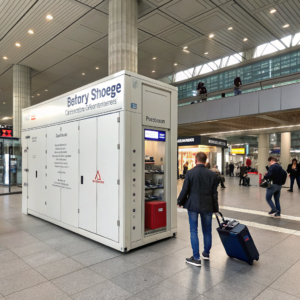Solar System O&M: Ensuring Long-Term Performance
•
Is your solar investment performing at its peak? Proper operations and maintenance (O&M) can mean the difference between maximum returns and disappointing underperformance.
Effective solar O&M combines performance monitoring, preventive maintenance, and rapid fault resolution to maintain 95%+ system availability and protect your 25-year investment.
With solar systems typically operating for 25+ years, a robust O&M strategy isn't optional - it's essential for protecting your energy asset's value and ensuring expected financial returns.
What Does Solar Operations and Maintenance Include?
What exactly are you paying for with solar O&M services? Comprehensive maintenance goes far beyond occasional panel cleaning to address all system components.
Professional solar O&M includes performance monitoring, electrical inspections, vegetation management, inverter servicing, and data analysis - typically costing 1-2% of system value annually.
The Complete O&M Service Scope
-
Routine Maintenance Essentials
- Quarterly panel cleaning (more in dusty areas)
- Biannual torque checks on all connections
- Annual thermal imaging for hot spots
-
Critical System Components Component Maintenance Frequency Key Checks Inverters Semi-annually Firmware updates, cooling fans Racking Annually Corrosion, structural integrity Wiring Biannually Rodent damage, insulation -
Performance Optimization
- String voltage balancing
- Shading analysis and mitigation
- Degradation rate tracking
"Systems with professional O&M generate 8-12% more energy over their lifetime compared to unmaintained arrays" - Solar Energy Industries Association
How to Monitor Solar System Performance
Are you really getting all the energy your solar system should produce? Effective monitoring catches issues before they become costly problems.
Modern solar monitoring uses IoT sensors and cloud platforms to track production in real-time, with alerts for deviations >5% from expected performance.
Implementing Effective Performance Tracking
-
Monitoring System Options
- Inverter-based monitoring (basic)
- Module-level power electronics (detailed)
- Third-party analytics platforms (advanced)
-
Key Performance Indicators Metric Ideal Range Warning Signs PR (Performance Ratio) 75-85% <70% indicates issues Degradation Rate <1%/year >1.5% requires investigation Inverter Efficiency 97-99% <95% needs service -
Actionable Alerts Setup
- Immediate alerts for zero production
- Daily reports for >10% deviations
- Monthly trend analysis reports
Pro Tip: Combine automated monitoring with quarterly manual meter readings to verify system accuracy.
Maintenance Strategies to Improve System Availability
How can you minimize solar downtime? Proactive maintenance beats reactive repairs every time - especially when your revenue depends on every kWh.
Preventive maintenance programs reduce solar system failures by 60-80%, with scheduled outages replacing unexpected downtime and extending equipment lifespan by 3-5 years.
Building a Reliability-Focused O&M Plan
-
Maintenance Approach Comparison Strategy Cost Downtime Best For Reactive Low High Small residential Preventive Medium Medium Commercial Predictive High Low Utility-scale -
Critical Spare Parts Inventory
- 1-2% spare modules (for large arrays)
- Backup combiner boxes
- Common inverter components
-
Seasonal Maintenance Focus
- Spring: Post-winter damage inspection
- Summer: Cooling system checks
- Fall: Pre-winter preparation
- Winter: Snow load monitoring
Case Study: A 5MW solar farm reduced outages from 14 to 3 days/year by implementing predictive maintenance, saving $120,000 annually in lost production.
Conclusion
Smart solar owners treat O&M as a value-protection strategy, not just an expense - because well-maintained systems reliably deliver promised returns for decades.








